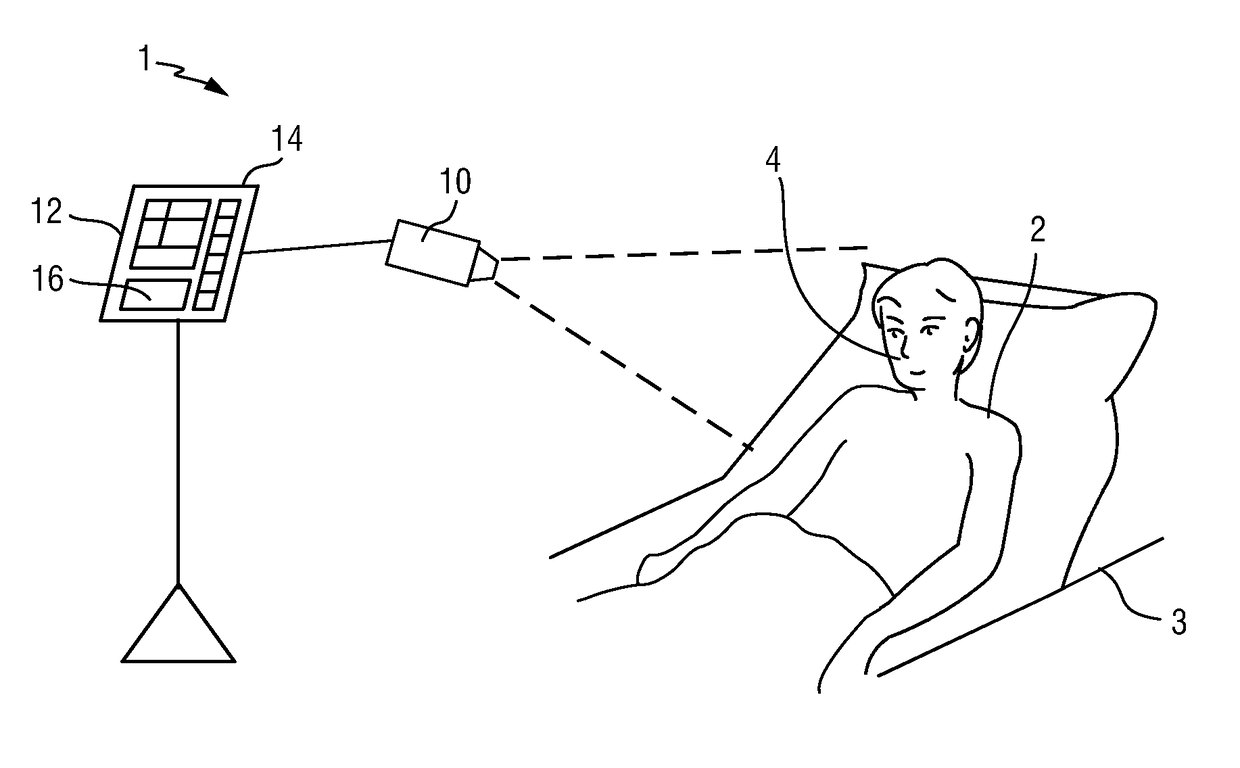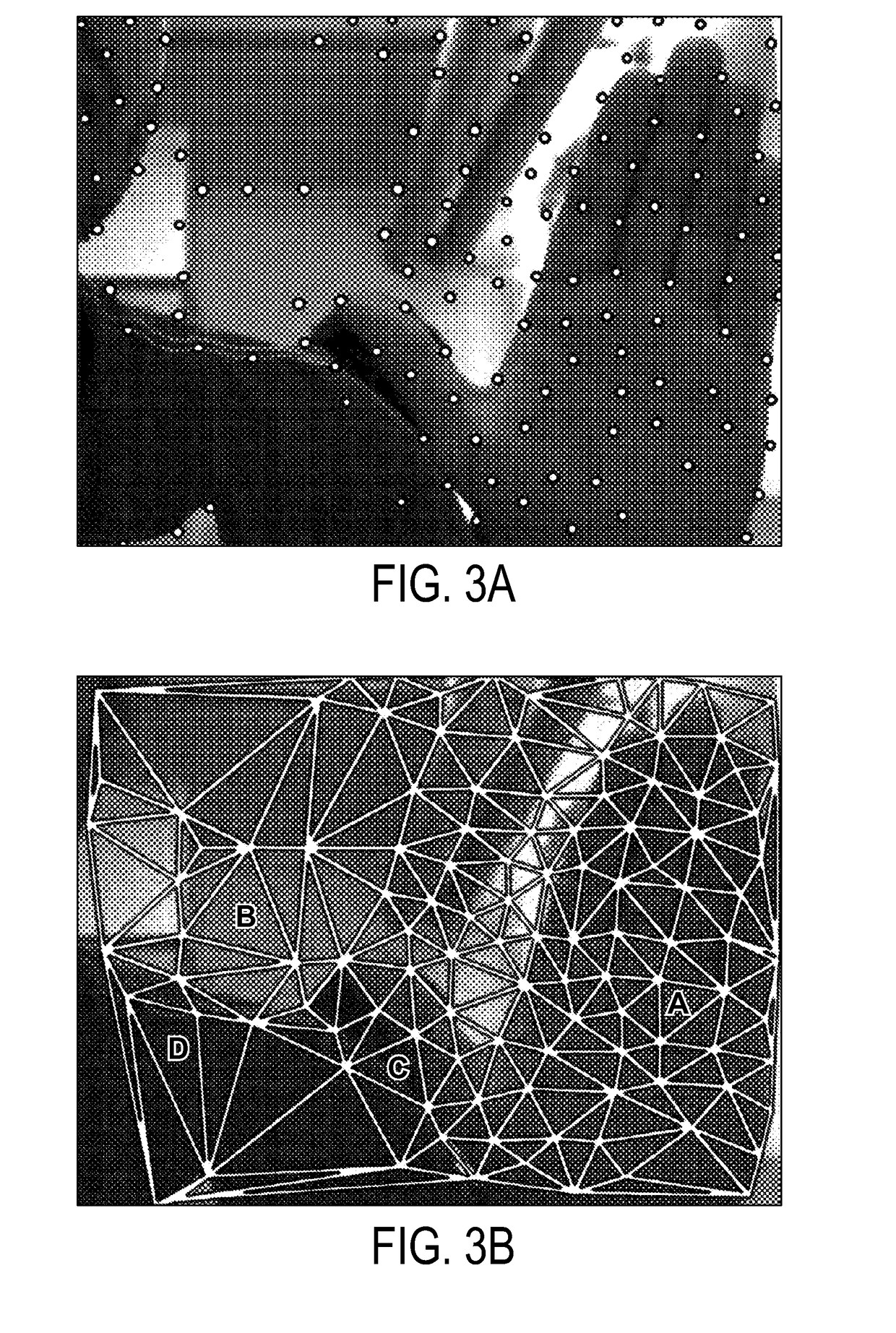Device, system and method for skin detection
a technology of skin detection and device, applied in the field of devices, system and methods for skin detection, can solve the problems of not being robust to changes in ambient light color, not being able to detect skin areas under low illumination conditions or in darkness, and achieving the effect of simple but effective and efficien
- Summary
- Abstract
- Description
- Claims
- Application Information
AI Technical Summary
Benefits of technology
Problems solved by technology
Method used
Image
Examples
Embodiment Construction
[0062]FIG. 1 shows a schematic diagram of a first embodiment of a system 1 for skin detection according to the present invention. The system 1 comprises an imaging unit 10 for acquiring a sequence of image frames of a scene over time. The scene includes, in this example, a patient 2 lying in a bed 3, e.g. in a hospital room or other healthcare facility, but may also be the environment of a neonate or premature infant, e.g. lying in an incubator / warmer, or a person at home or in a different environment. The imaging unit 10 is particularly a camera (also referred to as detection unit or as camera-based or remote PPG sensor), which is configured to obtain images of the scene, preferably including skin areas 4 of the patient 2. In an application of the device for obtaining vital signs of the patient 2, the skin area 4 is preferably an area of the face, such as the cheeks or the forehead, but may also be another area of the body, such as the hands or the arms.
[0063]The image frames captu...
PUM
 Login to View More
Login to View More Abstract
Description
Claims
Application Information
 Login to View More
Login to View More - R&D
- Intellectual Property
- Life Sciences
- Materials
- Tech Scout
- Unparalleled Data Quality
- Higher Quality Content
- 60% Fewer Hallucinations
Browse by: Latest US Patents, China's latest patents, Technical Efficacy Thesaurus, Application Domain, Technology Topic, Popular Technical Reports.
© 2025 PatSnap. All rights reserved.Legal|Privacy policy|Modern Slavery Act Transparency Statement|Sitemap|About US| Contact US: help@patsnap.com



